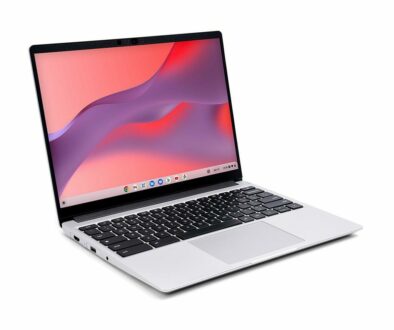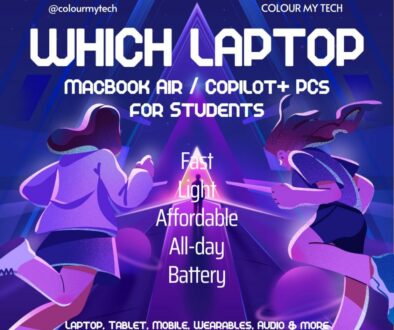Which Snapdragon X Laptop Is Right for You? A Guide to Elite, Plus, and Entry-Level Chips
Snapdragon is no longer just for smartphones. With the arrival of Qualcomm’s new Snapdragon X series, ARM-powered laptops are finally coming into their own. These chips, based on Qualcomm’s custom Oryon architecture, bring significant performance, incredible battery life, and cutting-edge AI capabilities to Windows laptops — all while maintaining cool, fanless designs.
Following Apple’s footsteps of moving ARM chip from iPhone to Tablet, Mac mini, iMac and MacBook, particularly the last one, Qualcomm who is in the business of making chips for smartphones, is now moving into the laptop space.
If you’ve been following the wave of Copilot+ PCs (Microsoft’s AI-first Windows laptops), chances are you’ve come across the Snapdragon X name. But with multiple tiers—X Elite, X Plus, and the new X (Entry)—it’s not immediately obvious which model suits your needs. Should you go all-in on performance, or can you save some money without sacrificing usability?
In this article, we break down each Snapdragon X variant, compare them head-to-head, and recommend the best laptops powered by these chips for students, professionals, and creatives. Let’s help you pick the right Snapdragon X laptop for your needs.
Meet the Snapdragon X Family
Qualcomm’s Snapdragon X series marks its most serious push yet into the PC space. Unlike earlier Snapdragon 8cx chips, which targeted ultraportable laptops with modest performance, the X series is built to rival Intel, AMD, and even Apple Silicon.
The lineup is powered by the custom-designed Oryon CPU, paired with a powerful Adreno GPU and a class-leading 45 TOPS NPU (Neural Processing Unit) designed for on-device AI tasks. The chips are fully fanless, energy-efficient, and tightly integrated — much like Apple’s M-series chips — and form the backbone of Microsoft’s new Copilot+ PC standard.
Here’s a quick look at the Snapdragon X lineup:
- Snapdragon X Elite: The top-tier chip with 12 high-performance cores, highest boost speeds (up to 4.2 GHz), and the most powerful Adreno GPU (~4.6 TFLOPS). Ideal for demanding tasks like video editing, multitasking, and AI workloads.
- Snapdragon X Plus: A more balanced offering available in 8- and 10-core variants, with clock speeds of up to 4.0 GHz. It’s made for productivity users who want performance and long battery life without the cost of a flagship device.
- Snapdragon X (Entry): The newest addition with 8 cores, designed for everyday use and budget-friendly laptops. It maintains the same AI NPU and Oryon architecture but runs at lower frequencies.
All three tiers share Qualcomm’s key innovations: blazing-fast wake times, ultra-long battery life (often 15–22 hours of video playback), and on-device AI capabilities designed to power new Windows 11 features like Recall, Studio Effects, and voice-based Copilot.
Snapdragon X Series Comparison Table
To help you quickly understand the differences between Snapdragon X chips, here’s a side-by-side comparison of the core specs, performance, and use cases:
| Feature | Snapdragon X Elite | Snapdragon X Plus | Snapdragon X (Entry) |
| CPU Cores | 12 Oryon cores | 8 or 10 Oryon cores | 8 Oryon cores |
| Max Clock Speed | Up to 4.2 GHz | Up to 4.0 GHz | Up to 3.0 GHz |
| GPU Performance | Up to 4.6 TFLOPS | Up to 3.8 TFLOPS | ~1.7 TFLOPS |
| NPU AI Performance | 45 TOPS | 45 TOPS | 45 TOPS |
| Thermal Design | Fanless | Fanless | Fanless |
| Battery Life | Excellent (13–22 hours) | Great (12–20 hours) | Good (10–18 hours) |
| Ideal Use Case | Creators, devs, AI users | Students, remote workers | Casual users, basic computing |
| Example Devices | Surface Pro 11, Galaxy Book4 Edge, HP EliteBook Ultra | Asus Vivobook S15, Lenovo Yoga Slim 7x, HP OmniBook X | Asus Vivobook 14/16, Dell Inspiron 14 Plus |

Snapdragon X Laptops on Amazon
Choosing the Right One Based on Your Needs
For Students and Casual Users
If your laptop usage mostly includes attending online classes, taking notes, browsing the web, streaming videos, or using Microsoft Office, you don’t need the firepower of the Snapdragon X Elite. Instead, a Snapdragon X (Entry) or X Plus (8-core) device will serve you just fine.
These chips offer more than enough performance for everyday computing and benefit from the same excellent battery life and fanless designs found in more expensive models. You’ll enjoy a quiet, always-responsive system with great standby time and instant-on performance—perfect for mobile learning and note-taking on the go.
Recommended devices:
- Asus Vivobook 14/16 (Snapdragon X)
- Dell Inspiron 14 Plus (Snapdragon X Plus)
- Lenovo IdeaPad 5x 2-in-1 (Snapdragon X Plus 8-core)
For Professionals and Hybrid Workers
Remote work, multitasking, video calls, presentations, and moderate creative tasks call for something a little more robust. The Snapdragon X Plus (10-core) or entry-level X Elite models hit the sweet spot for power and efficiency.
You’ll get smooth multitasking across virtual desktops, better performance in apps like Outlook, Teams, and Adobe Express, and support for Microsoft’s Copilot+ AI features like automatic meeting summaries and on-device transcription—all without sacrificing portability.
Recommended devices:
- HP OmniBook X (Snapdragon X Plus 10-core)
- Dell Latitude 7455 (Snapdragon X Plus)
- Lenovo Yoga Slim 7x (Snapdragon X Elite – 78 or 80 variant)
For Creators, Developers & Power Users
If you edit 4K video, run AI-enhanced creative apps, develop software, or regularly push your system to its limits, you’ll want the best Snapdragon X has to offer: the X Elite, preferably the 84 variant.
These chips are built for serious performance, with high clock speeds and powerful integrated GPUs. They rival or beat Apple’s M2 and Intel Core Ultra chips in many creative and productivity tasks. Combined with multi-day battery life and a fanless design, these laptops redefine what’s possible in an ultralight form factor.
Recommended devices:
- Microsoft Surface Pro 11 (OLED) – Snapdragon X Elite 80
- HP EliteBook Ultra – Snapdragon X Elite 78
- Samsung Galaxy Book4 Edge 16″ – Snapdragon X Elite 84 (top-tier boost clock)

Snapdragon X Plus Laptops on Amazon
Snapdragon X Elite vs Apple M2/M3 vs Intel Core Ultra
Choosing between ARM-based Snapdragon laptops and their Apple or Intel counterparts isn’t just about speed—it’s about user experience, compatibility, and efficiency.
Battery Efficiency: Snapdragon X laptops consistently outperform Intel Core Ultra machines in battery life, often offering 50–70% longer uptime. They’re comparable to Apple M2 and M3-powered MacBooks in this regard.
Performance
- The Snapdragon X Elite matches or exceeds Apple M2 and Intel Core Ultra 7 in many benchmarks—especially in multi-core performance and GPU-heavy workloads.
- The X Plus rivals Apple M1 and Intel Core i5 chips, offering solid performance for mainstream users.
AI and NPU Power: Snapdragon X laptops come with 45 TOPS NPUs, far outpacing Intel (10 TOPS) and Apple’s current generation (18 TOPS in M2, 38 in M3). This makes Snapdragon laptops ideal for the new wave of on-device AI features.
App Compatibility: Microsoft and partners have worked hard to ensure x86 and x64 apps run well on ARM. While some edge-case legacy software may perform slower under emulation, most mainstream apps (Chrome, Zoom, Adobe Creative Cloud, MS Office) are now ARM-native or optimised.

Snapdragon X Elite Laptops on Amazon
Key Benefits of Snapdragon X Laptops
Picking Elite, Plus, or Entry or Snapdragon X-powered laptops come with several shared benefits:
Fanless, Silent Design: All Snapdragon X laptops are fanless. That means they’re completely silent and run cool even during sustained workloads—ideal for classrooms, meetings, and creative environments.
All-Day Battery Life: Expect 13–22 hours of real-world battery life on most models, with up to several days on standby. No more carrying chargers around just to get through the day.
AI-Ready with Copilot+: Qualcomm’s 45 TOPS NPU allows real-time, on-device AI features like:
- Recall: Timeline-based file and activity search
- Windows Studio Effects: Auto-framing, background blur, voice focus
- Live captions and translation
- Copilot summarization and suggestions for documents, chats, and meetings
Instant Wake and Always-On Connectivity: Snapdragon X laptops wake instantly, connect faster to Wi-Fi, and offer seamless background sync thanks to smartphone-style low-power cores and integrated connectivity.
Things to Watch Out For
While Snapdragon X laptops offer impressive performance, battery life, and cutting-edge AI features, there are still a few things to consider before making the leap.
x86 App Compatibility: Despite significant improvements in app compatibility, especially with the help of Microsoft’s Prism emulator, some legacy Windows applications—especially those designed for older hardware or with deep system integrations—may not run perfectly on ARM. Power users who rely on niche x86 apps should check compatibility first or consider running web-based alternatives.
Most mainstream software, however—including Google Chrome, Adobe Photoshop, Zoom, Slack, Microsoft Office, and DaVinci Resolve—now runs natively or efficiently on ARM-powered Windows.
Driver Support and Peripherals: Although many accessories such as printers, webcams, and external monitors work just fine, some older peripherals with custom drivers might face compatibility issues. It’s a good idea to check for ARM-compatible drivers or ensure the peripheral is listed as compatible with Windows on ARM.
Limited Variant Availability: Not all Snapdragon X Elite variants are widely available. For instance, the X Elite 84—the most powerful version—is currently found only in select models like the Samsung Galaxy Book4 Edge 16″, which might not be available in all regions. If you’re set on specific hardware or configurations, you may need to be flexible or wait a bit longer as more OEMs roll out devices globally. But as with all things Tech, things can move quickly.
Pricing May Vary Widely: Some Snapdragon X Plus or X (Entry) laptops can offer excellent value, but flagship X Elite machines often carry premium pricing—especially if bundled with OLED displays, high refresh rates, or extra storage. Evaluate whether you truly need the top-tier power, or if a mid-range model might offer better value for your actual usage.
Final Thoughts
The Snapdragon X series signals a new era for Windows laptops. Qualcomm’s custom Oryon CPUs and ultra-efficient designs give these ARM-based machines real credibility, matching or surpassing many Intel and Apple devices in performance, battery life, and AI features. But not every Snapdragon X laptop is the same—and that’s where this article comes in handy.
If you’re a student or casual user, go for a device with the Snapdragon X (Entry) or X Plus 8-core chip. It’s more than enough for browsing, coursework, and media.
If you’re a professional or hybrid worker, step up to a Snapdragon X Plus 10-core or entry-level X Elite for improved multitasking and better app performance.
If you’re a creator, developer, or power user, invest in a Snapdragon X Elite 80 or 84 variant—you’ll benefit from unmatched CPU/GPU performance, fast AI processing, and silent operation.
You can find all the variants of the chip from Qualcomm:
With a growing list of supported apps, built-in AI features like Copilot+, and reliable battery performance, the new generation of Snapdragon X-powered laptops has finally made ARM PCs a realistic and competitive option for everyone.
As device availability continues to expand across brands and regions, there’s never been a better time to future-proof your workflow with a Copilot+ PC built on Snapdragon.

























